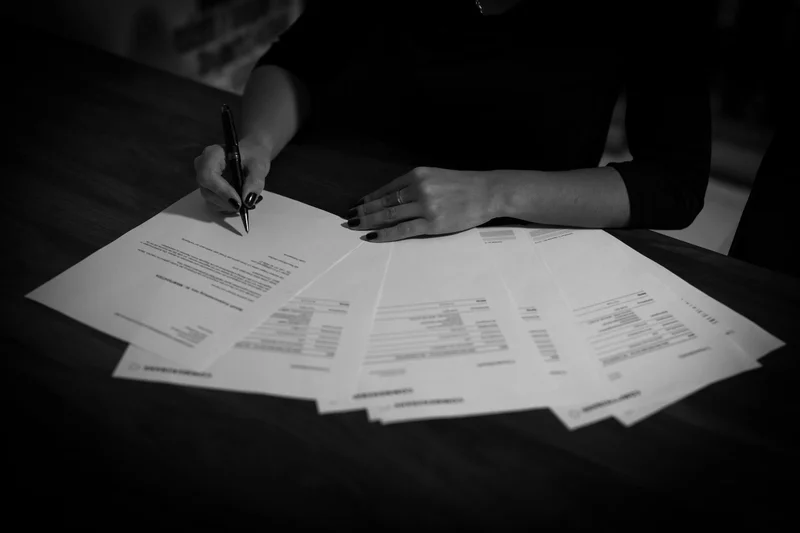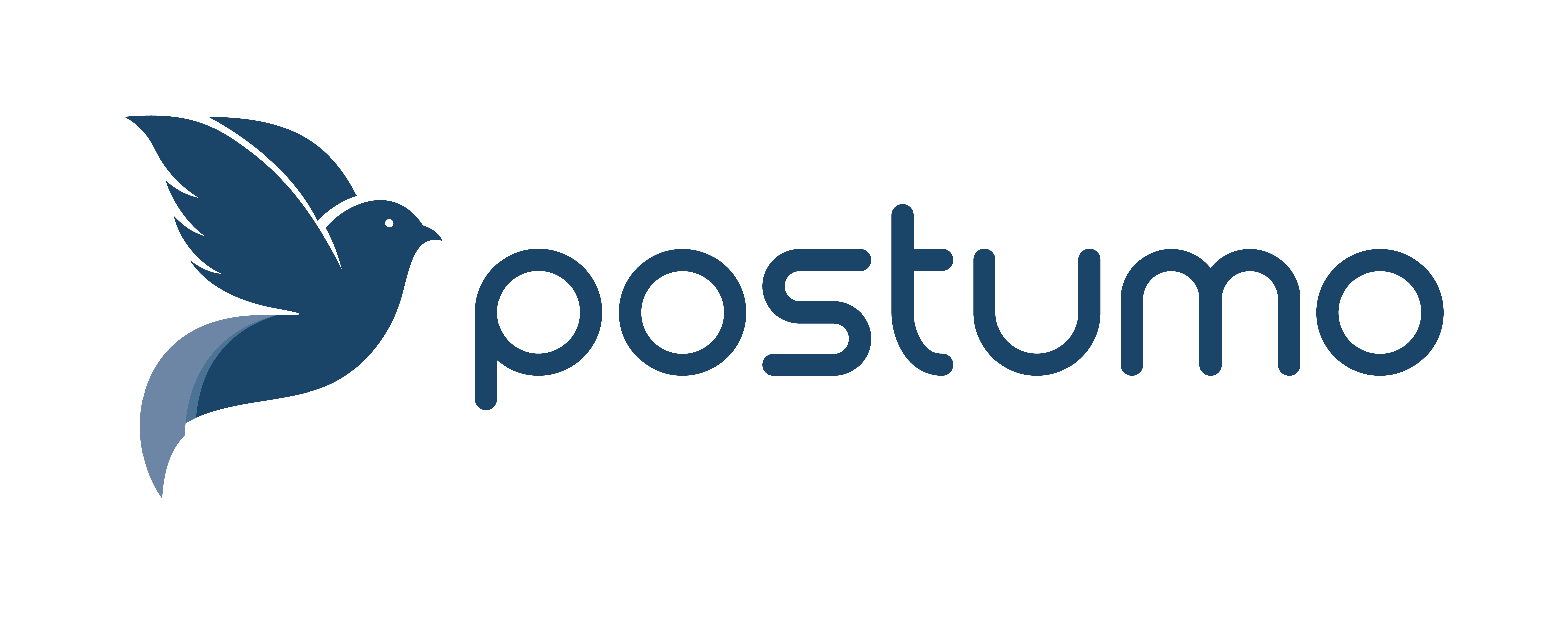Get our newsletter
Life is unpredictable, and it's essential to be prepared for all eventualities, including the end of your own life. Failing to plan ahead can have devastating consequences for you and your loved ones.
Get our tips now
I would like to access detailed information on death formalities.
Life is unpredictable, and it's essential to be prepared for all eventualities, including the end of your own life. Failing to plan ahead can have devastating consequences for you and your loved ones.
Get our tips now
Anticipate your life data to simplify the death process.
Vous êtes plus de 10 000 à nous rendre visite ici tous les mois, merci !


Postumo provides a complete inventory of the deceased's situation as well as the beneficiaries based on the life history of the deceased and the spouse.
This ensures that you know exactly who to notify in the event of death, and that you don't forget any formalities. The guide helps you find missing information that the family may not have thought of.
Avec Sérénité de Postumo, l’organisation en amont prend une nouvelle dimension. En plus d’établir un inventaire complet de la situation du défunt et des ayants-droit, cette option permet de planifier les démarches nécessaires bien avant un éventuel décès. Cela inclut la préparation des notifications essentielles et la sécurisation des informations importantes, assurant ainsi que rien ne soit oublié et que la transmission soit fluide et sans stress pour la famille.
Thanks to a carefully designed questionnaire, which covers 17 themes : Legal, vehicle(s), charity(ies), digital, firearms, family situation, professional situation, service providers (real estate, banking, insurance) and the social part to maintain or obtain social rights.
Postumo makes managing the aftermath of death easier by providing a complete list of organizations to contact and letters to send.

After the death of a loved one, it is important to draw up a post-death inventory of assets and debts.You'll also be able to find out exactly who to contact in the event of death, as well as the various organizations and post-death procedures that are mandatory.
This makes it possible to know the extent of your estate and organize the management of its assets. Certain procedures and formalities must be carried out with various organizations, such as banks,the insurance or the pension funds,to regularize the deceased's situation.
Regulatory deadlines are also set to impose acceptance of the product. or renunciation of the estate : taxes, CPAM, insurance, work benefits, estate declaration... There are many private and public organizations that need to be informed when a loved one dies.
Who to notify in the event of death: the list of organizations is unique, depending on each person's life history.
It is therefore essential to draw up an inventory of the administrative formalities to be carried out after a death, and to have an overview of the formalities in order to find all the missing information and make sure you haven't forgotten anything.
The post-death inventory and the search for missing information also ensure that all the deceased's debts and claims are taken into account. In fact, it is possible that the deceased may have contracted debts (note: check that the cause of death does not fall within the exclusions of credit life insurance) or that he is a creditor of certain people.
In this case, it is important to take these debts and receivables into account when determining the net value of the inheritance. and choose whether to accept or renounce the estate. This will also enable us to settle debts and recover receivables.
Last but not least, carrying out a post-death inventory and searching for missing information can facilitate the administrative procedures associated with the death. Indeed, certain authorities and organizations need to know the extent of the deceased's assets, the heirs and successors, as well as debts and claims, in order to be able to make decisions. It is possible to find this information on the deceased's bank statements (note that some organizations make annual deductions).
However, the dematerialization (or digitization) of account statements can complicate this search, and may incur fees. With this information at hand, it's easier to complete administrative procedures and settle death-related matters more quickly.
When a loved one dies, it's important to take stock of their situation (tenant, owner, etc.) and to list all the real estate and personal property they owned.
It could be a main residence, a rental property, land, a car, furniture, valuables, and so on. It's also important to note any mortgages or charges on the property. If you anticipate a dispute, don't hesitate to call in a court commissioner to draw up the inventory.
It is necessary to search for all bank accounts, savings books, shares, bonds and other financial investments held by the deceased.
It's important to collect account statements for the last 12 months to find out about current transactions and any debts or receivables.
It is important to research all life insurance contracts, death insurance policies and retirement pensions of which the deceased was a beneficiary or member. It is important to note the insurance companies involved, the amounts covered and the terms of payment.
Listing all the deceased's debts and receivables will give you an idea of the estate. IOUs held by the deceased on third parties can also be stored in the deceased's belongings or in a safe-deposit box.
It may be a bank debt. Don't forget that a creditor can ask for bank accounts to be frozen.You need to pay off your debts, whether personal or professional. These may include bank debts, tax debts, rent, loans, invoices, and so on. It is also important to investigate any claims the deceased may have had on third parties.
Postumo can help you draw up a detailed post-death inventory, giving you a 360° view of the deceased's life course and the certainty of leaving nothing out. Designed and developed to cover all possible situations and life paths, the platform provides an overview with intelligent questions based on your answers.
Family, professional, asset and banking situation, insurance subscriptions, service providers and employees, social security entitlements...
Postumo is designed to leave no stone unturned, and to cover all fields.

Once you've researched the missing information and taken stock of the steps you've taken, Postumo supports you to write all your death-related letters to organizations and make sure you don't miss any deadlines.

Postumo
www.postumo.fr
July 23, 2024
Compliance status
We firmly believe that the Internet should be available and accessible to everyone, and we are committed to providing a website that is accessible to the widest possible audience, whatever their circumstances and abilities.
To this end, we aim to comply as far as possible with the World Wide Web Consortium's (W3C) Web Content Accessibility Guidelines 2.1 (WCAG 2.1) at AA level. These guidelines explain how to make web content accessible to people with a wide range of disabilities. Compliance with these guidelines helps us to ensure that the website is accessible to all: blind people, people with motor impairments, visual impairments, cognitive impairments, and more.
This website uses various technologies to make it as accessible as possible at all times. We use an accessibility interface that enables people with specific disabilities to adjust the website's user interface (UI) and design it to suit their personal needs.
In addition, the website uses an AI-based application that runs in the background and constantly optimizes its level of accessibility. This application corrects the website's HTML, adapting its functionality and behavior for screen readers used by blind users, and for keyboard functions used by people with motor impairments.
If you've found a malfunction or have ideas for improvement, we'd love to hear from you. You can contact the website operators using the following e-mail address: contact@postumo.fr
Our website implements the ARIA (Accessible Rich Internet Applications) attribute technique, in addition to various behavioral changes, to ensure that blind users who visit the site with a screen reader can read, understand and enjoy the website's functions. As soon as a user with a screen reader enters your site, they are immediately prompted to enter the screen reader profile so they can navigate and use your site effectively. Here's how our website covers some of the most important requirements for screen readers, accompanied by screenshots of console code:
Optimization for screen readers: we run a background process that learns website components from top to bottom, to ensure continued compliance even when the website is updated. In this process, we provide screen readers with meaningful data using the ARIA attribute set. For example, we provide precise form labels; descriptions for actionable icons (social media icons, search icons, shopping cart icons, etc.); validation hints for form entries; roles for elements such as buttons, menus, modal dialogs (popups), and more. In addition, the background process scans all images on the website and provides an accurate and meaningful description based on object recognition as an ALT tag (alternative text) for images that are not described. It also extracts text embedded in the image, using OCR (optical character recognition) technology. To activate screen reader adjustments at any time, users simply press the Alt+1 key combination. Screen reader users also receive automatic announcements to activate screen reader mode as soon as they enter the website.
These adjustments are compatible with all popular screen readers, including JAWS and NVDA.
Keyboard navigation optimization: the background process also adjusts the website's HTML and adds various behaviors using JavaScript code to make the website keyboard-friendly. This includes the ability to navigate the website using the Tab and Shift+Tab keys, to operate drop-down menus using the arrow keys, to close them using Esc, to trigger buttons and links using the Enter key, to navigate between radio items and checkboxes using the arrow keys, and to fill them in using the spacebar or Enter key. In addition, keyboard users will find quick navigation menus and content skip menus, available at any time by clicking Alt+1, or as the first elements of the site when navigating with the keyboard. The background process also handles triggered popups by moving the keyboard focus towards them as soon as they appear, and does not allow the focus to drift away from them.
Users can also use shortcuts such as "M" (menus), "H" (titles), "F" (forms), "B" (buttons) and "G" (graphics) to jump to specific elements.
Epilepsy-safe mode: this profile enables people with epilepsy to use the site in complete safety, eliminating the risk of seizures caused by flashing animations or dangerous color combinations.
Visually impaired mode: this mode adjusts the site for the comfort of users with visual disorders such as impaired vision, reduced visual field, cataracts, glaucoma, etc.
Cognitive impairment mode: this mode offers various assistance options to help users with cognitive impairments such as dyslexia, autism, stroke and others to concentrate more easily on the essential elements of the site.
Hyperactivity-friendly mode (ADHD): this mode helps users with ADHD and neurodevelopmental disorders to read, navigate and concentrate more easily on the main elements of the site, while considerably reducing distractions.
Blind mode: this mode configures the site to be compatible with screen readers such as JAWS, NVDA, VoiceOver and TalkBack. A screen reader is software for blind users installed on computers and smartphones, and websites must be compatible with this software.
Keyboard navigation profile (people with reduced mobility): this profile enables people with reduced mobility to use the site using the Tab, Shift+Tab, and Enter keys. Users can also use shortcuts such as "M" (menus), "H" (titles), "F" (forms), "B" (buttons), and "G" (graphics) to jump to specific elements.
Font adjustments: users can increase and decrease font size, change font family (type), adjust spacing, alignment, line spacing and more.
Color adjustments: users can choose different color contrast profiles such as light, dark, inverted and monochrome. In addition, users can swap color schemes for titles, text and backgrounds, with over 7 different coloring options.
Animations: epileptic users can stop all animations in progress with a single click. Interface-controlled animations include videos, GIFs and flashing CSS transitions.
Content highlighting: users can choose to highlight important elements such as links and titles. They can also choose to highlight only those elements on which the pointer is placed or which are in focus.
Mute audio: users with hearing aids may experience headaches or other problems due to automatic audio playback. This option allows users to mute the entire site instantly.
Cognitive disorders: we use a search engine linked to Wikipedia and Wiktionary, enabling people with cognitive disorders to decipher the meanings of phrases, initials, slang and more.
Additional functions: we offer users the option of changing cursor color and size, using a print mode, activating a virtual keyboard, and many other functions.
Browser and assistive technology compatibility
We aim to support the widest possible range of browsers and assistive technologies, so that our users can choose the tools best suited to their needs, with as few limitations as possible. As a result, we've worked very hard to support all the major systems that account for over 95% of user market share, including Google Chrome, Mozilla Firefox, Apple Safari, Opera and Microsoft Edge, JAWS and NVDA (screen readers), for both Windows and MAC users.
Despite all our efforts to enable everyone to adjust the site to their needs, there may still be pages or sections that are not fully accessible, that are in the process of becoming so, or that lack an adequate technological solution to make them accessible. Nevertheless, we are continually improving our accessibility, adding, updating and enhancing options and features, and developing and adopting new technologies. All this is aimed at achieving the optimum level of accessibility, keeping pace with technological advances. For assistance, please contact contact@postumo.fr






